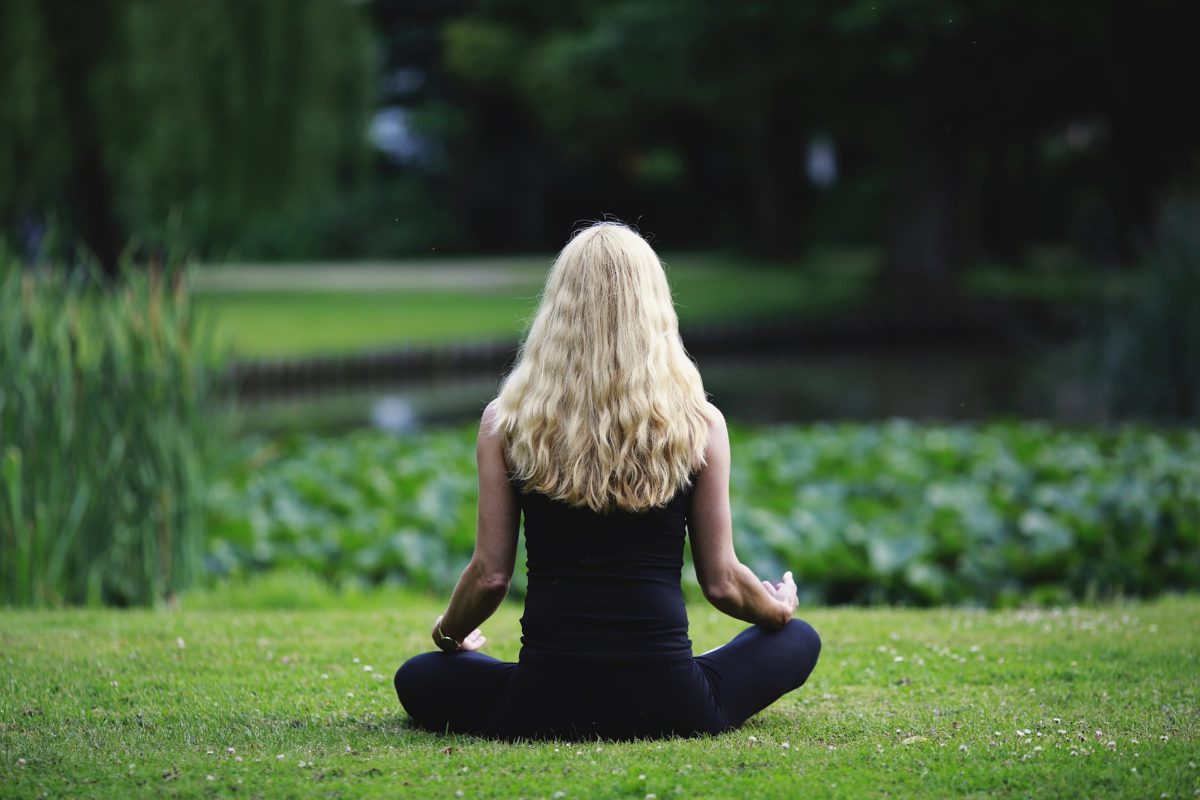In her video on Yoga Nigra Meditation, Karen Brody explains that this form of “yogic sleep” Is designed to enable us to rest. She maintains that each of us continually pushes ourselves to do more, often to the point of exhaustion. Chiropractor, Alan Jansson, has observed that chronic fatigue, which used to be the province of elite athletes, is now experienced by more and more people with diverse lifestyles, including senior executives. Karen, in her book Daring to Rest, focuses on exhaustion experienced by women and recounts her own experience of chronic fatigue and panic attacks – resulting, in part, from raising two young children while her husband was constantly travelling overseas for his work. The book provides links to nigra meditations recorded by Karen. The free online video also provides a brief nigra meditation (at the 39 minute mark), while a fuller version of her nigra meditation is available on her paid DVD or CD.
What is Yoga Nigra Meditation?
Karen Brody describes yoga nigra meditation as an “ancient yogic sleep-based guided meditation technique” that is very powerful in helping people to rest and overcome fatigue, anxiety, sleeplessness, chronic fatigue and other manifestations of emotional exhaustion and/or lack of energy. She explains that rest is the foundation of health and vitality while exhaustion can be experienced at different levels or layers – physical, mental/emotional and life purpose (also called “spiritual” or life meaning).
Nigra yoga meditation is a form of “sleep with a trace of awareness” that addresses energy blockages in each of the five “bodies” or layers of our human existence – focusing on each in turn during the guided meditation. Karen explains these five bodies briefly in the free video:
- Physical body – all our bones, muscles, tissues, skin and ligaments. The physical body is typically accessed via a guided body scan as the first step of the nigra meditation.
- Energy body – sensing and releasing energy and enabling us to be in the flow when blockages are removed. The energy body is accessed via mindful breathing as a second step of the nigra meditation.
- Thought/habit body – the mental body that encapsulates who we think we are and our habituated thinking patterns, reflected in our self-stories. Nigra meditation helps us to dissolve these ingrained, mental “imprints” by assisting us to challenge our self-stories.
- Wisdom body – understanding that bears witness to the fact that we experience fear and trust, hot and cold; the concept of “both/and” with the ability to integrate this dichotomy into an integrated perception of ourselves. This body or layer represents a visceral understanding (a deep-down understanding) accessed via guided visualisation.
- Bliss body – a deep sense that “everything is okay”, a deep sense of connection to the universe.
Yoga International provides a more technical explanation of the five bodies or “koshas” of yoga nigra meditation. A Daring to Rest Podcast provides even deeper insight through sharing key takeaways from the First International Yoga Nigra Conference.
The benefits of yoga nigra meditation
Yoga nigra provides rest and regeneration without exertion. Karen points out that yoga nigra does not involve stretching or adopting unusual positions. It is often undertaken lying down, where the emphasis is on rest, not exertion. In fact, nigra yoga is so restful that people can fall asleep during the meditation.
Yoga International identifies five benefits of yoga nigra – (1) ease of use providing accessibility to anyone, (2) simple to integrate into daily life, (3) easy way to reduce stress, (4) does not encourage self-judgment because you cannot do it wrongly, and (5) leads to an intimate knowledge of self.
As we grow in mindfulness through different forms of meditation, such as the layered approach of yoga nigra meditation, we can gain a deep self-awareness, improve our self-regulation, develop a heightened capacity to access flow/ being-in-the-zone, reduce our stress and re-energise our minds and bodies.
____________________________________________
Image by Khusen Rustamov from Pixabay
By Ron Passfield – Copyright (Creative Commons license, Attribution–Non Commercial–No Derivatives)
Disclosure: If you purchase a product through this site, I may earn a commission which will help to pay for the site, the associated Meetup group and the resources to support the blog.


